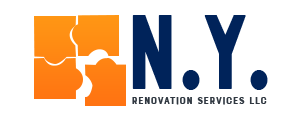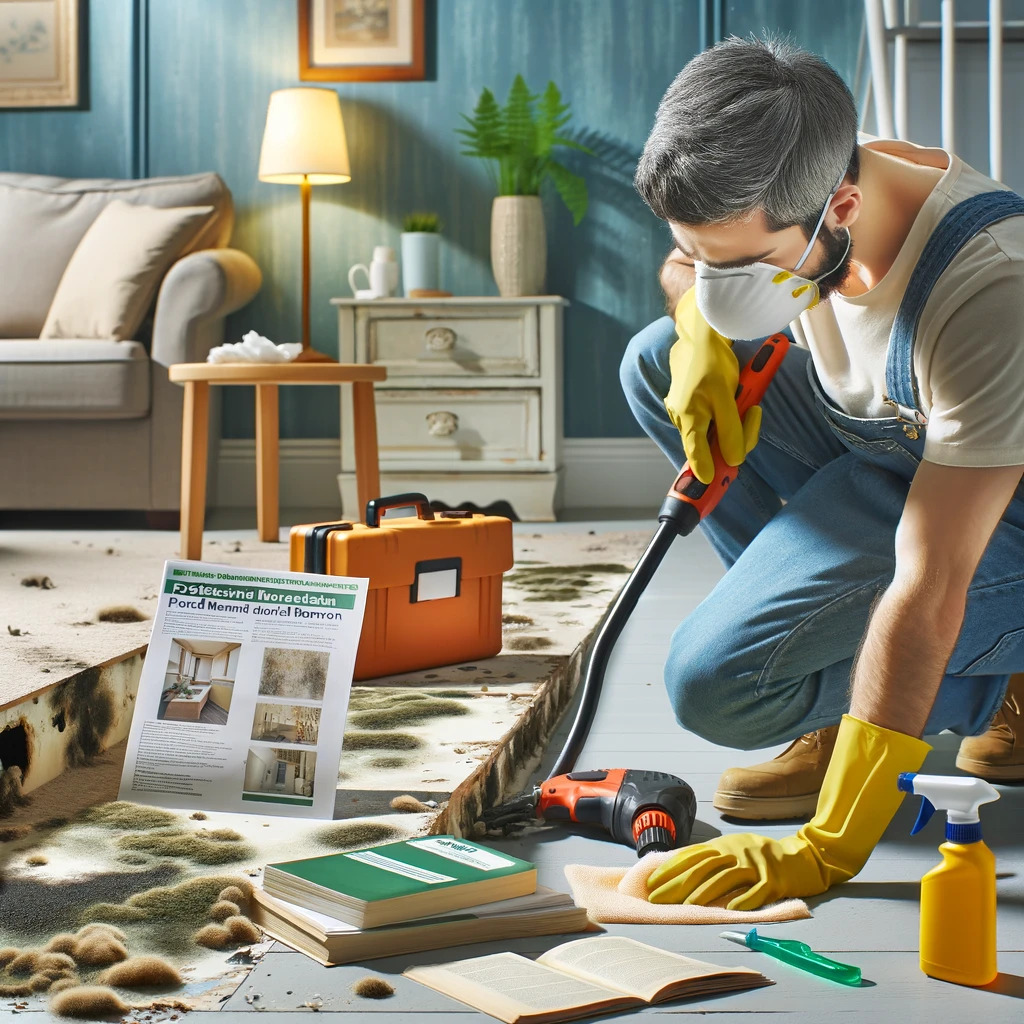Mold, the unwelcome guest, thrives in darkness and dampness, silently spreading its spores and impacting your health and home’s value. But fear not, fellow homeowner! This guide equips you with the knowledge and practical steps to keep mold at bay, ensuring a healthy and happy haven for you and your loved ones.
Step 1: Be a Mold Detective – Unmasking the Sneaky Spores
Mold, the uninvited guest, thrives in the shadows, silently spreading its spores and impacting your health and home’s value. But fear not, fellow homeowner! This expanded step equips you with the keen eye of a detective and the knowledge to unmask the mold menace lurking in your home.
1.1 The Scent Game: Decoding the Musty Messages
Mold often announces its presence through a distinct, earthy odor. This “musty” smell, reminiscent of damp basements or old books, is a telltale sign that spores are on the loose. However, be aware that mold can also emit subtle, less noticeable odors, so vigilance is key.
- Targeted sniffing: Focus on areas with high moisture levels, like bathrooms, kitchens, basements, attics, and around leaky pipes.
- Seasonal variations: Moisture issues often become more noticeable during humid seasons or after heavy rains.
- Changes in the scent: A sudden, unexplained change in the smell of your home, even if not distinctly musty, could warrant further investigation.
1.2 The Visual Vigilante: Spotting the Spore Show
While mold often lurks in hidden corners, it can also leave visible clues for the observant eye. Don’t be fooled by harmless dust – mold typically appears as fuzzy, discolored patches on walls, ceilings, or around windows and doors. Keep an eye out for these specific signs:
- Color clues: Green, black, and brown are common mold colors, but don’t rule out orange, yellow, or even white varieties.
- Texture tales: Mold can be fuzzy, slimy, or even powdery. Be wary of any unusual surface changes in damp areas.
- Pattern puzzles: Mold growth often appears in uneven, patchy patterns, unlike the smooth finish of paint or wallpaper.
1.3 Beyond the Surface: Unveiling the Hidden Havens
Mold thrives in darkness and dampness, making it a master of disguise. Don’t let its invisibility fool you! Look beyond the obvious and consider these hidden havens:
- Behind the walls: Mold can easily colonize the space behind drywall, especially in bathrooms, kitchens, and areas with water damage.
- Underneath carpets and furniture: Poor ventilation and trapped moisture can create a mold paradise under rugs and furniture.
- Inside crawl spaces and attics: These often-neglected areas, with their high humidity and poor air circulation, are prime breeding grounds for mold.
- Inside air ducts and HVAC systems: Mold spores can easily travel through ductwork, contaminating your entire home environment.
1.4 The Moisture Monster: Following the Damp Trail
Water is the lifeblood of mold, so identifying the source of moisture is crucial to preventing its growth. Be a water detective and track down these potential culprits:
- Leaky roofs and gutters: Damaged roofs or overflowing gutters can allow water to seep into your home, creating perfect mold breeding grounds.
- Condensation issues: Poor ventilation in bathrooms, kitchens, and laundry rooms can lead to condensation buildup, attracting mold.
- Plumbing leaks: Even minor leaks from pipes and faucets can provide enough moisture for mold to thrive.
- Flooding or water damage: Promptly address any flooding or water damage incidents, as mold can quickly colonize damp areas.
1.5 The Health Detective: Listening to Your Body’s Whispers
While mold may not be immediately visible, it can silently wreak havoc on your health. Be attuned to your body’s subtle cries for help, especially if you experience these symptoms:
- Unexplained allergies or respiratory issues: Runny nose, sneezing, coughing, and difficulty breathing can be indicators of mold exposure.
- Headaches and fatigue: Persistent headaches and unexplained fatigue can also be linked to mold exposure.
- Skin irritation and rashes: Mold spores can cause itching, burning, and red or scaly skin patches.
- Eye irritation: Red, itchy, or watery eyes can be another symptom of mold exposure.
Remember: Early detection is crucial to preventing mold from spreading and impacting your health. By honing your detective skills and following these steps, you can unmask the mold menace lurking in your home and take charge of your indoor environment.
Step 2: Nip it in the Bud – Early Intervention is Your Weapon
Unmasking the mold menace in your home is just the first step. Now comes the crucial task of neutralizing the threat and preventing its insidious return. This expanded Step 2 equips you with the tools and knowledge to nip mold growth in the bud, ensuring a mold-free haven for you and your loved ones.
2.1 Containment Masterclass: Stopping the Spore Storm
Before tackling the mold itself, focus on containing its spread. This prevents further contamination and protects your health during the remediation process. Here’s your containment arsenal:
- Seal the Deal: Use plastic sheeting and masking tape to cordon off the affected area, creating a barrier between the mold and the rest of your house. Seal doorways and ventilation openings to prevent spores from traveling.
- Mind the Airflow: Open windows and doors in unaffected areas to create cross-ventilation and dilute spore concentration. Avoid creating drafts that could blow spores into clean areas.
- Protect Yourself: Wear disposable gloves, a mask, and protective eyewear during the cleaning process to minimize exposure to mold spores.
2.2 Cleaning Strategies: Choosing the Right Weapon
Different types of mold require different cleaning methods. Choose the right weapon for the job to ensure effective removal without damaging your surfaces or triggering further growth:
- The Bleach Brigade: For small mold patches on hard surfaces like tiles, sinks, or countertops, a diluted bleach solution (1 cup bleach to 1 gallon of water) is effective. Apply the solution, let it sit for 10-15 minutes, then scrub and rinse thoroughly.
- Vinegar’s Versatile Power: For non-porous surfaces like glass or wood, a vinegar solution (equal parts water and vinegar) can be an effective alternative to bleach. Spray the solution, let it sit for 30 minutes, then wipe clean.
- Commercial Cleaners: Seek Expert Help: For larger mold infestations, porous materials like carpets or drywall, or specific types of mold, consult a professional mold remediation company. They use specialized equipment and biocides to safely and effectively remove the mold.
2.3 Dehumidification Dynamo: Drying Out the Enemy
Mold thrives in damp environments. Lowering the humidity level in your home is crucial to prevent its return. Here’s your dehumidification arsenal:
- Open Windows and Doors: When weather permits, open windows and doors to promote natural air circulation and reduce humidity.
- Dehumidifier Deployment: Invest in a dehumidifier and set it to maintain a humidity level below 50%. Aim for areas with high moisture levels like bathrooms, kitchens, and basements.
- Air Conditioning Assistance: In hot and humid climates, air conditioning can help control humidity levels. Ensure proper ventilation to avoid moisture buildup within the system.
2.4 Filtration Force Field: Protecting Your Airwaves
After cleaning and dehumidifying, consider using air purifiers with HEPA filters to capture any remaining mold spores circulating in the air. This provides an extra layer of protection for you and your family.
2.5 Monitoring Mission: Keeping an Eye on the Spore Spy
Even after successful remediation, vigilance is key. Regularly monitor the cleaned area for signs of mold regrowth. Look for new discoloration, musty odors, or any changes in the surface texture.
2.6 Professional Assistance: When DIY Fails
For extensive mold growth, hidden infestations, or health concerns related to mold exposure, seeking professional help is crucial. Qualified mold remediation companies have the expertise, equipment, and safety protocols to handle the situation effectively.
Remember: Early intervention and proper containment are essential to preventing mold from spreading and impacting your health. By following these steps and seeking professional help when necessary, you can effectively nip mold in the bud and reclaim a healthy, mold-free home for your family.
Step 3: Proactive Prevention – Building a Mold-Resistant Fortress
Mold, the unwelcome guest, may have been vanquished from your home, but its shadow still lingers. Prevention becomes your shield, ensuring your haven remains a mold-free paradise. This expanded Step 3 equips you with the knowledge and tools to build a fortress against the insidious return of mold spores.
3.1 Moisture Management: The Master Key to Mold-Free Living
Mold thrives in damp environments. Controlling moisture is the cornerstone of your preventive strategy. Here are your moisture management weapons:
- The Leak Detective: Regularly inspect roofs, gutters, pipes, and appliances for leaks. Address any issues promptly to prevent water infiltration.
- Ventilation Vanguard: Ensure proper ventilation in bathrooms, kitchens, and laundry rooms to prevent moisture buildup. Open windows and doors when possible, and consider installing exhaust fans in moisture-prone areas.
- Dehumidifier Defender: Invest in a dehumidifier and maintain a humidity level below 50% throughout your home, especially in basements and crawl spaces.
- Sunlight Savior: Open curtains and blinds to allow natural sunlight to reach damp areas. Sunlight inhibits mold growth and promotes natural drying.
- Dry Clothes Diva: Avoid drying clothes indoors, as the excess moisture can contribute to mold growth. Use a clothes dryer or hang clothes outside to dry.
3.2 Cleaning Crusader: Keeping Mold at Bay with Regular Maintenance
Regular cleaning prevents mold spores from taking root and establishing themselves. Here’s your cleaning arsenal:
- Bathroom Blitz: Clean bathrooms regularly with disinfectant cleaners and pay extra attention to areas around bathtubs, showers, and sinks.
- Kitchen Keep-Clean: Clean spills and messes promptly in kitchens to prevent moisture buildup and mold growth on surfaces and appliances.
- Flooring Firewall: Regularly vacuum and wash carpets, rugs, and hard floors to remove dust, dirt, and potential mold spores.
- Furniture Fighter: Move furniture periodically to allow air circulation and clean underneath to prevent mold growth in hidden corners.
- HVAC Hero: Schedule regular maintenance for your HVAC system to ensure proper airflow and prevent moisture buildup within the unit.
3.3 Material Marvels: Choosing Mold-Resistant Options
Certain materials are naturally more resistant to mold growth. Consider incorporating these into your home renovations or replacements:
- Mold-Resistant Paint: Opt for mold-resistant paints, especially in bathrooms, kitchens, and basements, to minimize the risk of mold growth on walls and ceilings.
- Tile Triumph: Ceramic or porcelain tiles are resistant to moisture and mold, making them ideal for bathrooms, kitchens, and laundry rooms.
- Solid Surfaces: Consider using solid surface materials like quartz or granite for countertops and shower stalls instead of porous materials like wood or laminate.
- Flooring Fortress: Opt for mold-resistant flooring options like vinyl, linoleum, or porcelain tiles, especially in high-moisture areas.
- Natural Ventilation Champions: Choose windows and doors that promote natural ventilation and airflow to prevent moisture buildup.
3.4 Renovation Revolution: Building a Mold-Free Future
Planning a renovation? Consider incorporating mold-resistant features and materials to create a long-lasting, mold-free haven. Here are some tips:
- Waterproofing Warrior: Ensure proper waterproofing for basements, crawl spaces, and exterior walls to prevent water infiltration.
- Ventilation Visionary: Design your renovation with adequate ventilation in bathrooms, kitchens, and laundry rooms to prevent moisture buildup.
- Mold-Resistant Materials Champion: Choose mold-resistant materials for walls, ceilings, floors, and countertops during the renovation process.
- Professional Guidance: Consult with a qualified mold remediation specialist or contractor during the planning stages of your renovation to ensure proper mold prevention measures are incorporated.
3.5 Education is Your Ally:
Knowledge is power in the fight against mold. Stay informed by researching:
- Mold types and their characteristics
- Effective cleaning and prevention methods
- Local building codes and regulations regarding mold remediation
- Resources for finding qualified mold remediation professionals
Remember: By actively managing moisture, adopting regular cleaning habits, choosing mold-resistant materials, and staying informed, you can build a formidable fortress against mold and ensure your home remains a healthy, mold-free haven for you and your loved ones.
Step 4: When DIY Fails – Seeking Professional Help for a Complete Mold Eradication
While the previous steps have armed you with the knowledge and skills to combat mold in your home, some situations demand the expertise and resources of professionals. This expanded Step 4 equips you with the crucial knowledge to recognize when DIY solutions fall short and how to navigate the world of professional mold remediation.
4.1 Recognizing the Limits of DIY:
- Extensive Mold Growth: When mold covers large areas of walls, ceilings, or floors, DIY removal becomes impractical and potentially hazardous. Professional intervention is crucial to ensure complete eradication and prevent further spread.
- Hidden Mold Havens: Mold can lurk in concealed spaces like crawl spaces, attics, or inside walls and HVAC systems. DIY methods often miss these hidden havens, leaving the spores to continue multiplying and posing health risks.
- Health Concerns: If mold exposure has resulted in persistent respiratory problems, skin irritation, or other health issues, seeking professional help is essential. They can assess the situation, identify the mold type, and recommend appropriate remediation methods to safeguard your health.
- Structural Damage: Mold can weaken and damage building materials like wood, drywall, and insulation. In such cases, professional remediation is necessary to not only remove the mold but also address the structural damage.
- Peace of Mind and Professional Guarantee: Hiring a qualified mold remediation company provides peace of mind knowing the job is done right and the mold threat is neutralized. They often offer warranties and guarantees on their services, ensuring your long-term protection.
4.2 Finding the Right Professionals:
- Certification and Licensing: Look for companies certified by reputable organizations like the National Association of Mold Professionals (NAMP) or the American Council on the Science and Technology of Building (ACST)
- Experience and Expertise: Choose companies with experience in dealing with various mold types and situations. Ask for references and check online reviews to get a sense of their reputation.
- Insurance and Bonding: Ensure the company is adequately insured and bonded to protect you from any liability in case of accidents or property damage during the remediation process.
- Clear Communication and Transparency: Choose a company that provides clear communication about their assessment, remediation plan, costs, and timeline. They should be open to answering your questions and addressing your concerns.
- Written Estimates and Contracts: Always obtain a written estimate outlining the scope of work, estimated costs, and warranty details before agreeing to any services.
4.3 The Professional Mold Remediation Process:
- Inspection and Assessment: A thorough inspection by qualified professionals will identify the extent of the mold growth, the type of mold present, and the source of moisture. This assessment helps determine the appropriate remediation plan.
- Containment and Isolation: Professionals will seal off the affected area to prevent further spore spread and protect occupants during the remediation process.
- Mold Removal: Depending on the type and extent of the mold, various methods like HEPA-filtered vacuuming, dry ice blasting, or chemical treatment may be employed.
- Air Purification and Ventilation: The professionals will use HEPA air purifiers and ensure proper ventilation to remove airborne spores and prevent their recirculation.
- Moisture Control and Restoration: Addressing the underlying moisture issue is crucial to prevent mold regrowth. Professionals may recommend repairs to leaky roofs, plumbing systems, or ventilation systems.
- Post-Remediation Verification: After the remediation process is complete, professionals will conduct air quality testing to ensure the mold has been effectively removed. They will also provide recommendations for ongoing moisture control and mold prevention strategies.
4.4 Additional Resources for Finding Help:
- The Environmental Protection Agency (EPA): Offers valuable information on mold identification, remediation, and health risks.
- The Institute of Inspection, Cleaning and Restoration Certification (IICRC): Provides resources for finding qualified mold remediation professionals.
- The American Society of Home Inspectors (ASHI): Can recommend qualified home inspectors who can assess your home for potential mold problems.
Remember: Seeking professional help when DIY solutions are insufficient is crucial to protect your health, prevent further damage, and ensure a complete eradication of the mold threat. By doing your research, choosing the right professionals, and understanding the process, you can reclaim a healthy and mold-free home for you and your loved ones.
RenovationServices.com: Your Partner in a Mold-Free Future
Dealing with mold can be overwhelming, but you don’t have to face it alone. RenovationServices.com is your one-stop shop for all your home renovation needs, including mold remediation. Our team of experienced professionals has the expertise and equipment to tackle even the toughest mold problems, ensuring your home is safe and healthy for you and your family.
From initial inspection and mold removal to restoration and ongoing maintenance plans, RenovationServices.com provides a comprehensive solution, giving you peace of mind knowing your home is in good hands.
Remember, a mold-free home is a healthy home. By following these simple steps and seeking professional help when needed, you can create a safe and comfortable haven for yourself and your loved ones. So, breathe easy and take charge of your indoor environment today!
General Mold Information:
- Environmental Protection Agency (EPA):
- Mold and Your Home: https://www.epa.gov/mold
- Mold Cleanup in Your Home: https://www.epa.gov/mold
- A Brief Guide to Mold, Moisture, and Your Home: https://19january2021snapshot.epa.gov/mold/brief-guide-mold-moisture-and-your-home
- Centers for Disease Control and Prevention (CDC):
- Mold and Your Health: https://www.cdc.gov/mold/default.htm
- Cleanup & Remediation: https://www.cdc.gov/mold/cleanup.htm
Finding Professional Help:
- The American Industrial Hygiene Association (AIHA): Offers a directory of certified mold inspectors and remediators: https://www.aiha.org/
- The National Association of Home Inspectors (ASHI): Offers a directory of home inspectors who can assess your home for mold problems: https://www.homeinspector.org/
- The American Council on the Science and Technology of Building (ACST): Provides resources for finding qualified mold remediation professionals: https://www.acsh.org/
- The National Institute of Environmental Health Sciences (NIEHS): Offers information on mold and its health effects: https://www.niehs.nih.gov/health/topics/agents/mold/index.cfm
Additional Resources:
- The Department of Housing and Urban Development (HUD): Offers information on housing quality and healthy homes: https://www.huduser.gov/
- The Consumer Product Safety Commission (CPSC): Offers information on moldy products and recalls: https://www.saferproducts.gov/
- Your state or local health department: May offer additional resources and guidance on mold in your area.






